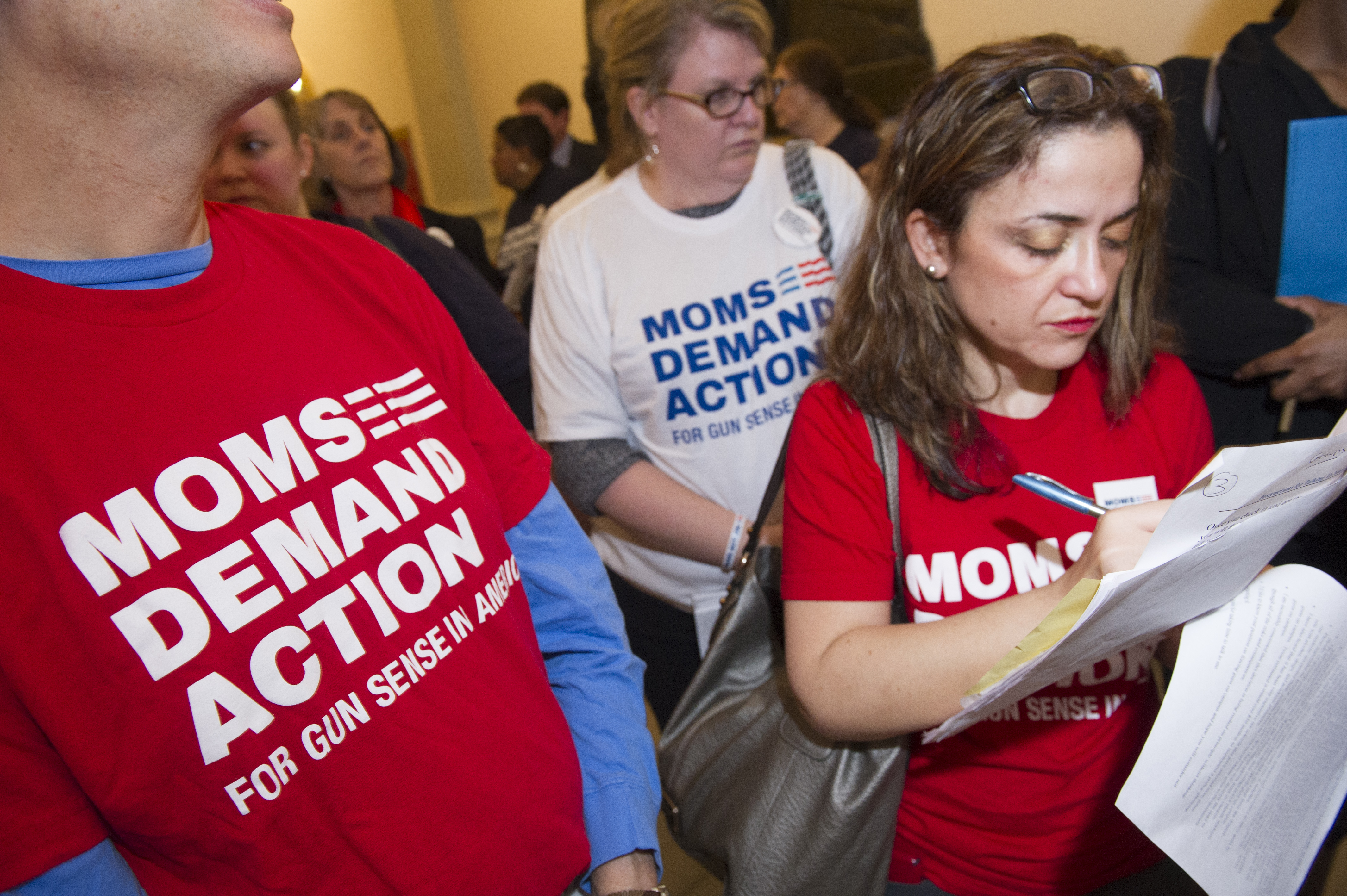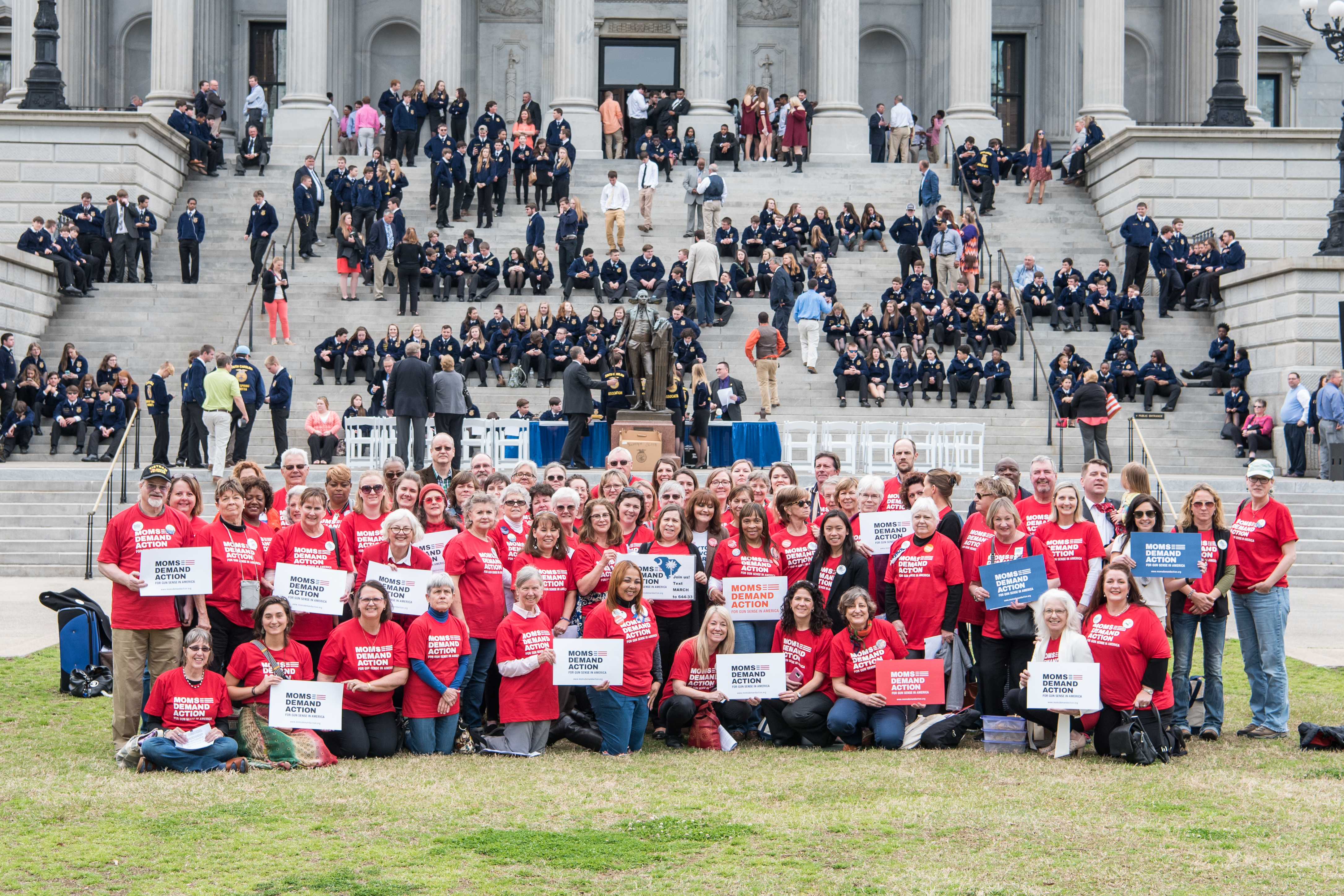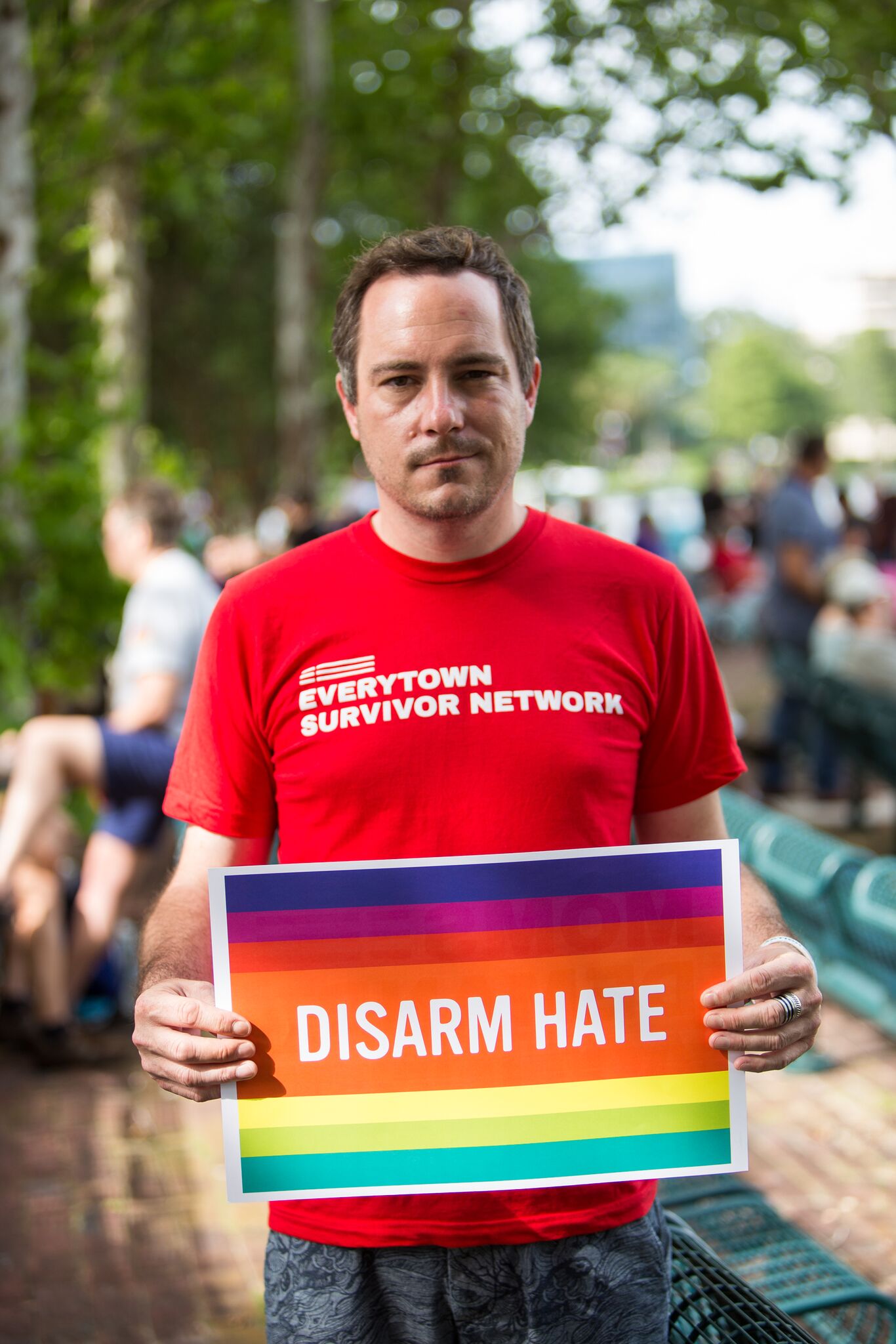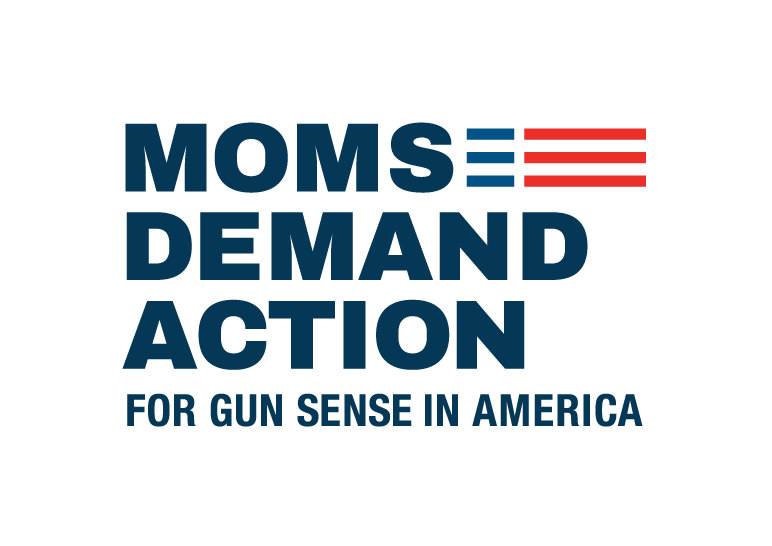America is known for its love of guns and a history littered with mass shootings — 372 in the US alone in 2015, killing 475 people and wounding 1,870, according to the Mass Shooting Tracker.
And for parents who are sending their kids off to school, they have to deal with the bleak reality of numbers: There were 64 school shootings in 2015.
In light of other countries, America surpasses everyone in gun-related deaths: The number of gun murders per capita in the US in 2012 was nearly 30 times that in the UK, at 2.9 per 100,000 compared with just 0.1.
Of all the murders in the US in 2012, 60% were by firearm compared with 31% in Canada, 18.2% in Australia, and just 10% in the UK.
But it seems only the worst shooting massacres seem to get much media attention and attention, is what really spurs some to commit crimes which are unfathomable.
The lack of stringent laws, particularly in this political climate, is sure to only exacerbate the already troubling situation that exists in America and groups like Moms Demand Action for Gun Sense in America are waging a war to keep their kids safe and the rest of the general population, too.

Amy Ramaker is a chapter leader with the California chapter of Moms Demand Action for Gun Sense in America and became involved with the organization after the Sandy Hook Elementary School shooting on December 14, 2012, in Newtown, Connecticut, when 20-year-old Adam Lanza fatally shot 20 children.
“I was devastated by the murders at Sandy Hook, and honestly felt numb thinking about the number and the ages of the children murdered,” Amy recalls. “Of course, it made me think of my own children. Then when the incident where four people were killed and eight injured in Isla Vista near Santa Barbara, I felt like I had to do something. I saw a flyer for a group fighting gun violence to be held at a local coffee shop. The group was called Moms Demand Action for Gun Sense in America.”
She started “as a concerned Mom, became leader of the San Diego group” and is now the Group Lead Manager for Southern California.
She has also endured the heartbreak of loss over sensleless gun violence.
“My cousin’s brother-in-law was killed in an armed robbery, the robbers took less than five dollars,” she explains. “He left behind a wife and two small children.”
Since 2014 she’s been with Moms Demand Action for Gun Sense in America, and the organization has “worked diligently to affect change in our gun laws in every state and also on the Federal level. ”
She says: “We testify at hearings, we support legislation that keeps guns out of dangerous hands, we oppose legislation that puts more guns, in more places, no questions asked and we use our powerful voices to advocate for those who have died by all forms of gun violence –unintentional shootings, homicides and suicide deaths by guns. We keep the memory of those victims in the forefront of our message to our legislators.
“And we are making a real difference. Last year, we stopped bills that would have allowed guns into schools in more than a dozen states and we saw voters support gun safety ballot initiatives in Washington State and California.”
But the election of Donald Trump has proved to be the organization’s most challenging obstacle.
” The gun lobby, in this case the NRA, contributed $30 million to President Trump’s campaign,” Amy explains. “And the gun lobby is already taking advantage of the early days of the Trump administration and the new Congress, doing everything they can to gut our gun laws and advance an agenda of more guns everywhere for anyone, and this includes already successfully weakening our background check system and making it easy for people prohibited from gun ownership to pass checks.
“In January, the Trump White House reversed an SSA rule enacted during the Obama administration and now people who been adjudicated for mental illness by the Social Security Administration and have been judged incapable of handling their own financial affairs can still buy a gun.”
The most difficult aspects Moms Demand Action for Gun Sense in America have faced in a mere few months is, she says: “I think the hardest thing for me personally was listening to gun lobby backed politicians and gun extremists say repeatedly that organizations like Moms Demand Action want to repeal the Second Amendment, which couldn’t be further from the truth,” she says. “It’s the continuation of this fallacy that makes our job so difficult. We want sensible gun laws to help prevent some of the 33,000 gun deaths in America per year.
“We know common sense gun policy and responsible gun ownership goes hand-in-hand with the Second Amendment. We know that a majority of Americans—including NRA members and gun owners—agree.”
Given that the NRA spent $30 million to elect Trump, there are variouis complications that play out for groups like Moms Demand Action for Gun Sense in America, but Amy insists that they will not be deterred on their mission.
“We have passionate Moms, Dads and grandparents who work tirelessly to try to keep our children and grandchildren safe,” Amy says. “We’re a relatively young organization and we are just getting started. We’ll raise our voices louder and keep fighting
“Our army of galvanized mothers and gun violence survivors will be there every step of the way to fight the extremist and dangerous NRA leadership/Trump agenda.
“We know how to be the David to the National Rifle Association’s Goliath – we’ve been taking them on and winning in statehouses across the country. We came out of the 2016 election stronger than ever—with a rapidly growing network of grassroots volunteers who dedicated their time and money to talk to millions of voters around the country about gun safety. And now, we will bring that fight and our dedication to standing up for public safety to Washington, DC.”

Is it a fight that can be won?
“Yes,” she says. “There are certainly days that are frustrating, but California is a great example of progress. Last legislative session, Governor Brown signed a bill into law that closed a loophole in our background check system. This legislative session we are supporting a bill that will make sure guns are not allowed in our children’s classrooms. And most of all, it’s the good fight; it’s the fight for our children. We are on the right side of history.”
And what would she tell every parent in America?
“I would tell every parent in the U.S. who owns a gun to be responsible in your ownership, lock your gun trigger, store you gun in a locked safe, store your ammunition separately from your gun, and never think that your child would never touch your gun,” she says. “Statistics prove otherwise. I would ask every parent in the U.S. to talk to the parents of your child’s play dates, overnights or study sessions. Don’t be afraid to ask if someone has a gun, and make sure that they have stored their guns securely. You would ask about a swimming pool, or alcohol, so ask about guns. If the people you’re asking are offended, then don’t let your child go to their home. This information is part of our Be Smart program.”
For Amy, Kindness and Hope means: “Kindness is what we aspire to, kindness is what we hope will be shown to us individually. It’s the Golden Rule taken to it’s fullest. Hopefully, kindness begets kindness. Hope itself is something less tangible, it’s something that we carry in our hearts and minds. When hope is lost, then all is lost. I am still hopeful that we can awaken our country to the horrors of gun violence, domestic violence and to the horror of children killing children. That is my most fervent hope.”

For Allen Wayne McNeil, his hope comes in the form of still being alive. He recounts his own heartbreaking story where he was shot three times in his own front yard.
He writes of his ordeal on Faces of Courage.
Here is his story:

October 12, 2012, started out as a typical day. It was a bit chilly that morning, so I put on a sweater that I particularly liked and headed to the local arts center where I worked at the time. We held a concert as part of an exhibit, so it was a long day, but a wonderful one.
I was tired when I got home so I decided to unwind in the swing hanging from a large oak tree in my front yard. It was around 11:30 pm when I decided I should get to bed – I had an early day at work the next day. Just as I started to get up, I heard what I thought were firecrackers going off. I turned and saw two young men walking towards me on the sidewalk. My first thought was, “Why are they throwing firecrackers at me?” I felt an urgency to get inside.
I turned to walk towards the front door and heard another “firecracker.” I felt an odd sensation, like pressure coming from both the inside and outside of my body, at the same time. It was then that I saw one of the men had a gun, and he was shooting at me. Perhaps I was in shock, but I did not realize I had already been struck two times.
I rushed to get inside the house, but tripped and fell at the front stoop. I was sitting with my back up against the front door—the men were right on top of me. The shooter held the gun to my face and said, “Do you like my gun?” I put my arm up to defend myself and he shot me again, this time at point-blank range. The bullet entered through my armpit and lodged in my back, about an inch from my spine.
Somehow, I managed to open the door, get inside, and shut it. Remarkably, my attackers didn’t follow me inside– I most likely wouldn’t have survived any more wounds. I later learned they likely ran off as neighbors came out to see what was going on. They didn’t want to get caught.
Once inside, I remember feeling relief that my roommate was already on the phone with 911, and I wouldn’t have to call myself. I began looking for something to help stop the blood streaming from my chest. I saw the sweater I had on earlier in the day, sitting beside a shirt I didn’t particularly like. I picked up the shirt and held it to my chest. Still on the phone with 911, my roommate insisted I lay down, so I did, but it became hard to breathe.
It may sound trivial, but all I could think about at that moment was everything I hadn’t finished at work and what still needed to get done. This made me even more panicked.
Then, I thought, “Is this what it feels like to die?”
Thankfully, paramedics quickly arrived at the scene, and so did the police. I remained conscious enough to answer officers’ questions and was in incredible pain as I was taken to the hospital.
I was hit by three bullets, which damaged one of my lungs, my liver, obliterated my gall bladder, and nicked my stomach. I was unconscious for an entire day after the surgery to repair my ravaged body.
The first few days were physically painful but the emotional pain was just as intense. I was given powerful medicine to help control the physical pain, only to wake up time and time again to encounter the reality that I had, in fact, been shot multiple times in my front yard.
Today, I still experience moments of intense physical pain due to nerve damage in my torso. Most of the time, however, the pain is manageable, so I feel fortunate in that regard. Losing my gallbladder has profoundly impacted my diet—I can no longer enjoy the foods I once did without side effects.
The shooters were never apprehended. I was one of five others in the area who were shot in their front yards that week. However, the police don’t believe the cases are connected.
I will probably never know who shot me. But I do know that if Alabama required a background check on every gun sale, our state would be safer. There isn’t one solution that can stop every shooting, but there are common sense steps we can take to prevent gun violence. Perhaps, then, my shooting could have been prevented.
After my shooting, I was interviewed by the media many times urging for stronger gun laws. I spoke out as often as I could for someone who had just experienced a traumatic, life-altering event. In my home state of Alabama I received an immense amount of pushback every time my comments were published or aired. It became too emotional for me to deal with, so I took a long break.
Today, I serve as the Survivor Engagement Lead for Mobile, and I am an Everytown Survivor Fellow. I speak frequently at public events, and do both local and national interviews on the topic of gun violence prevention. I am committed to taking any opportunity I get to help advance our cause.About a year-and-a-half later, I decided I could no longer be silent. I connected with Everytown for Gun Safety and founded the Mobile, Alabama chapter of Moms Demand Action for Gun Sense in America. This dynamic organization not only connected me with others who have experienced the trauma of gun violence, but gave me the necessary training and tools to become a confident advocate for sensible gun reform.
Now, when I’m published or quoted, people can challenge me and it doesn’t feel like a personal attack. I don’t feel re-victimized. I just feel more committed to go out and see things accomplished that will make my family and friends safer.
What I’ve learned since joining Everytown and Moms Demand Action is that there IS a community of people who not only care, but who are intensely passionate about taking action to prevent senseless gun violence. Gun violence galvanizes people out of anger and out of shared grief. It’s time we harness this passion and drive real change.
If you or anyone you know has been personally affected by gun violence and would like to share your story with Moms Demand Action, please click here. To learn more about Moms Demand Action for Gun Sense in America and to donate, click here.



